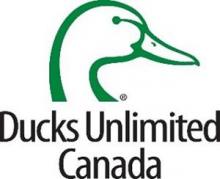
A LOOK BACK ON 30 (PLUS) YEARS OF SUCCESSFUL WATERFOWL CONSERVATION, THANKS TO A CROSS-BORDER PARTNERSHIP MODEL.
Its 1991 and Brett Calverley’s green Chevy s10 is bouncing along the dusty grid roads that slice through the knob and kettle landscape of the Buffalo Lake Moraine area of Alberta. Calverley’s on the hunt for quarter sections (160 acres) of land, fresh to the market. That land — prime nesting habitat for migrating waterfowl — was in desperate need of saving.
Fortunately, Calverley had the financial clout of the North American Waterfowl Management Plan (NAWMP) in his back pocket as he drove along. The NAWMP is a remarkable example of international, inter-governmental, private sector and not-for-profit collaboration that provides long-term protection of wetland and associated upland habitats needed by the continent’s waterfowl and other migratory birds.
Accompanied by a land agent, Calverley was fuelled by a youthful belief that he was changing the world, one plot of land at a time. And he had a new computer model that told him which land purchases and leases would provide the biggest bang for the ducks.
“It was exciting because everything was so new,” recalls Calverley. “What we were doing was going to solve the continent’s waterfowl productivity issues.”
Calverley was a Ducks Unlimited Canada (DUC) habitat securement specialist and coordinator of the NAWMP “First Step Project” in Alberta. His delivery of these initial NAWMP implementation efforts in the Buffalo Hills Moraine was one of the three such projects introduced in each of the Prairie provinces.
“We had so many stakeholders in Canada and the U.S. who were keen to see us be successful,” says Calverley. “I was out in the field every day, but there were also a lot of meetings. And there was a lot of planning for the bigger picture going on at the same time.”
When NAWMP was formed in 1986, waterfowl habitat was being drained, destroyed or polluted at an alarming rate.
The U.S. government responded by enacting the North American Wetlands Conservation Act (NAWCA) in 1989 to provide federal costshare funding to support NAWMP. Those matching dollars came from a variety of Canadian federal and provincial bodies and private sector donations, enabling groups like DUC to seek out and save valuable wetlands. In Alberta, DUC staffers used software models that pinpointed the land most likely to help them hit the target of the NAWMP. That goal? To return waterfowl numbers to the levels they were in the 1970s.
To read more, follow the link or download the article below.
